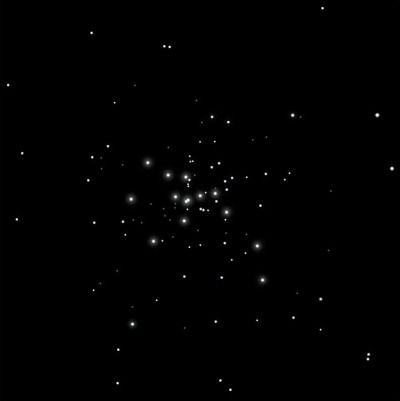
Giovanni Hodierna probably discovered M36 = NGC 1960 = h358 in 1654. Guillaume Le Gentil rediscovered the cluster in 1749 and he is credited with the discovery in the NGC. William Herschel, using his 7-ft reflector (6.2" aperture) at 120x on 28 Oct 1794, called it "a pretty rich cluster of small [faint] stars, seems to have many more than are visible, very small [faint]."
200/250mm - 8" very bright, large, loose, includes two curving star lanes. The double star ?737 = 8.5/9.0 at 11" is near the center.
400/500mm - 18" (1/17/09): at 175x roughly 175 stars are resolved in the central 10' but irregular extensions increase the halo to closer to 20' and includes roughly 250 stars. Many of the stars are arranged in long curving strings as well as one very distinctive curving loop on the SE side of the core with a pretty double (?737 = 8.5/9.0 at 11") with a fainter third companion at the NW end of the loop. The cluster itself is pretty symmetrical with a dense 10' core and the brighter stars are sprinkled about fairly uniformly.
Naked-eye - (10/24/11): just glimpsed in very dark skies.
Notes by Steve Gottlieb